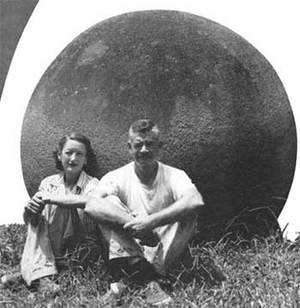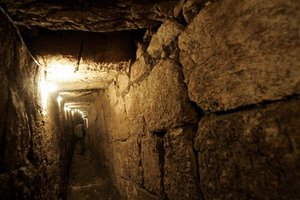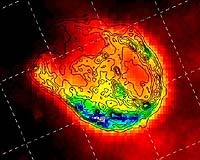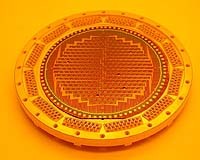As the unscientific wife of a scientist, who for years has tagged along on archaeological expeditions, I have witnessed many seemingly unexplainable discoveries, but none has provided a greater challenge or teased my imagination more acutely than the unbelievable stone balls found in Central America. The riddles they pose would threaten the deductive powers of a Sherlock Holmes.

|
| ©Eleanor Lothrop and Paul Allen
|
| The author and her husband resting by one of the spheres. But for a revolution, they might never have investigated them.
|
Why should hundreds of these perfectly shaped spheres, ranging in diameter from a few inches to eight feet, be scattered through the jungles southwestern Costa Rica? How could prehistoric people have shaped them with only the crudest of tools? And how could they have moved them over hill and dale from the distant sources of stone? No other stone balls of like size have been found anywhere else in the world, except for a few in the highlands of Guatemala and in Vera Cruz. The smooth, beautiful and almost perfectly rounded spheres give mute testimony to the artistic powers of an ancient people and tax modern man's ingenuity in explaining their workmanship and significance.



